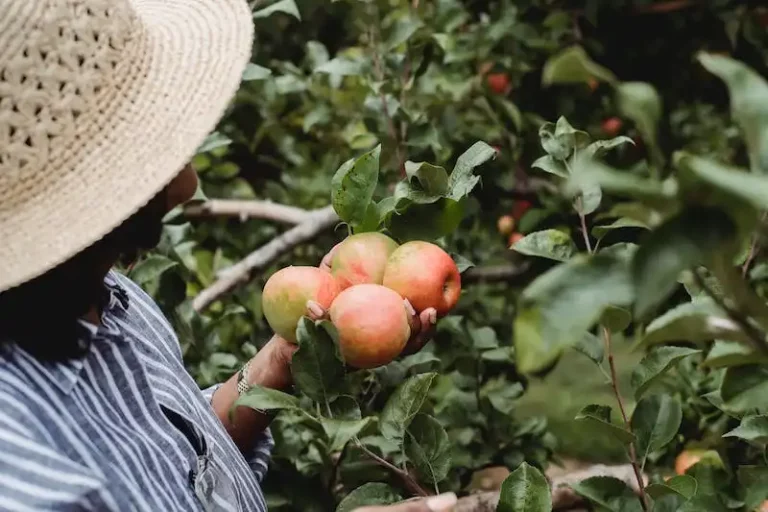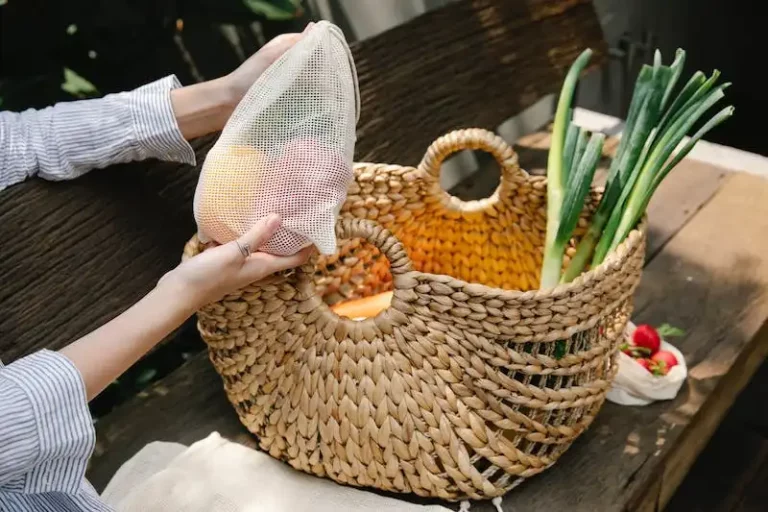If you’re a beginner plant enthusiast or a proud plant parent, you may have come across the Philodendron Birkin. This beautiful variety of Philodendron is known for its stunning heart-shaped leaves with white veins, making it a popular choice for indoor gardening. However, like any other plant, the Philodendron Birkin will eventually outgrow its pot and need to be repotted.
Repotting is a vital part of plant care, as it allows the roots to spread and grow freely, while also providing fresh nutrients and space for the plant to thrive. It’s also an opportunity to check for any signs of diseases or pests and take appropriate measures to prevent them from spreading.
Repotting a Philodendron Birkin can be done in just three easy steps. First, gently loosen the roots from the old pot and divide any bound roots. Then, prepare a pot with a well-draining soil mix or use a mixture of soil and leca. Finally, plant the Philodendron Birkin in the new pot and water thoroughly. To prevent overwatering, place a tray under the pot to catch any excess water and allow the plant to absorb what it needs.
One important tip to remember when repotting Philodendrons is to use a pot that is slightly larger than the previous one. Philodendrons are known to grow quickly and will appreciate the extra room for their roots to spread. This will also ensure that you don’t have to repot them too frequently.
Proper watering is another essential aspect of Philodendron Birkin care. While they can tolerate a range of light conditions, it’s best to place them in a bright spot where they can receive indirect light. Watering should be done when the top inch of the soil feels dry, typically every 1-2 weeks. However, make sure to adjust the frequency depending on the season and the humidity levels in your home.
Thanks to their heart-shaped leaves and striking white veins, Philodendron Birkins can add a touch of elegance to any indoor space. By following these easy steps and providing the appropriate care, you can ensure the health and longevity of your Philodendron Birkin plants.
Philodendron Varieties: How to Grow Indoors
Philodendron is a genus of flowering plants that belongs to the family Araceae. There are numerous varieties of Philodendron, each with its own unique characteristics and requirements for growth. These plants are popular choices for indoor gardening due to their attractive foliage and ability to thrive in various light conditions.
One of the most popular varieties is the Philodendron Birkin, which features beautiful green leaves with white variegation. It is easy to grow indoors and requires moderate light to keep its foliage vibrant and healthy.
When it comes to growing Philodendron indoors, it’s important to choose the right pot and soil. Philodendrons prefer a well-draining potting mix that allows excess moisture to escape. A pot with drainage holes is essential to prevent waterlogged soil, which can lead to root rot.
Repotting is also a crucial step in maintaining the health of your Philodendron. When the roots become bound within the pot, it’s time to repot the plant into a larger container. This allows the roots to spread and prevents them from becoming cramped.
Here are the steps to repot a Philodendron Birkin:
- Unpot: Carefully remove the Philodendron Birkin from its current pot. Gently loosen the soil and roots to avoid damaging them. If the roots are tightly bound, you can use a knife or shears to divide the plant into smaller sections.
- Choose a new pot: Select a pot that is one or two sizes larger than the current one. Ensure that the pot has drainage holes to prevent water accumulation.
- Repot: Place a layer of well-draining soil at the bottom of the new pot. Position the Philodendron Birkin in the center and fill the surrounding space with more soil. Press the soil gently to secure the plant and provide stability.
After repotting, give your Philodendron Birkin a thorough watering to settle the soil and hydrate the roots. Place it in a location with bright, indirect light to encourage healthy growth. Philodendrons can sometimes be sensitive to direct sunlight, so it’s best to keep them away from windows that receive intense heat.
Indoor temperatures between 60-80°F (15-27°C) are generally suitable for Philodendron growth. Higher humidity levels are preferable, but they can tolerate lower levels as well. Misting the leaves or placing a tray of water nearby can help increase the humidity around the plant.
Philodendrons are generally low-maintenance plants, but they still require regular attention. Check the soil moisture levels regularly and water when the top few inches of soil feel dry. Avoid overwatering, as this can lead to root rot. Fertilize the plant every 2-4 weeks during the growing season with a balanced houseplant fertilizer.
When it comes to Philodendron varieties, there are many options to choose from. Aside from the popular Birkin, some other popular varieties include the Philodendron Gloriosum, which has large heart-shaped leaves with silver veins, and the Philodendron Congo, known for its wide, blade-like leaves. Each variety offers its own unique appeal and can be a great addition to your indoor plant collection.
Overall, growing Philodendron indoors is easy and rewarding. With the right care and attention, these plants can thrive and bring beauty to your indoor space. Whether you’re a beginner or experienced gardener, Philodendrons are a great choice for adding greenery and life to your home.
Watch Now How to Grow and Care for a Philodendron Plant
If you’re a philodendron enthusiast or looking to start growing one, this article will provide you with the necessary information to successfully grow and care for a Philodendron plant. Philodendrons are cool and trendy indoor plants that are known for their beautiful foliage and easy care requirements. Here’s a step-by-step guide to help you get started.
Step 1: Choose the Right Variety
There are many varieties of philodendrons to choose from, each with its own unique characteristics. Some popular ones include the Philodendron Birkin, Philodendron Brazil, and the Philodendron Micans. Consider the size and growth habit of the plant when choosing a variety.
Step 2: Provide the Right Conditions
Philodendrons are relatively easy to care for and can adapt to different light conditions. They prefer bright, indirect light but can also tolerate lower light conditions. Avoid direct sunlight as it can burn the leaves. Philodendrons need well-draining soil and should be watered thoroughly, allowing the top few inches of soil to dry out between waterings. They don’t like to sit in wet soil, so make sure the pot has drainage holes.
Step 3: Repotting and Propagating
Repotting can become necessary when your philodendron starts to outgrow its pot. Choose a pot that is one size bigger than the current one and use a well-draining soil mix. Carefully remove the plant from its current pot, loosening the roots if needed, and replant it in the new pot. Philodendrons can also be propagated by stem cuttings, which can be rooted in water or directly in the soil.
Remember to inspect your plants regularly for signs of pests or diseases. Common issues include whiteflies and root rot. If you notice any problems, take appropriate steps to address them. Wear gloves when handling philodendrons, as they can sometimes cause skin irritation, and be careful not to overwater, as this can lead to root rot. Don’t forget to fertilize your philodendron regularly with a balanced fertilizer according to the package instructions.
By following these steps and providing the right care, your philodendron plant will thrive and become a stunning addition to your indoor plant collection. If you have any questions or need further information, there are plenty of online resources available for philodendron enthusiasts.
Philodendron Care
Philodendrons are some of the best plants for indoor gardening. They are known for their beautiful foliage and easy care requirements. The Philodendron Birkin, a variety developed by foliage expert Dan Shytsman, is a particularly stunning specimen with its dark green leaves and distinct white vein patterns.
When it comes to philodendrons in general, they are relatively easy to care for. They can thrive in a wide range of lighting conditions, from bright indirect sunlight to low light areas in your home. Philodendrons prefer well-draining soil, so using a quality potting mix with good drainage is essential. Make sure the soil is slightly moist but not waterlogged; overwatering can cause root rot.
Philodendrons do well in average room temperatures, but they are sensitive to drought. To ensure your plant stays happy and healthy, watch for yellowing leaves or browning tips, as these signs may indicate that your Philodendron needs more water. During the growing season (usually spring and summer), you can fertilize your plant with a well-balanced plant food to help it thrive.
Repotting your Philodendron Birkin every 2-3 years is important to ensure it doesn’t become root bound. To repot, carefully remove the plant from its current pot and loosen the roots. Choose a slightly larger pot with good drainage, and add fresh potting soil. Place the plant in the new pot, ensuring that the root ball is at the same level as the previous pot. Gently press the soil around the plant to secure it. After repotting, water the plant thoroughly and keep it in a bright, indirect light location.
If you have pets, it’s important to note that Philodendrons are toxic to cats and dogs. Keep them out of reach or consider choosing pet-friendly houseplants instead.
Propagation is another way to expand your Philodendron collection. You can propagate Philodendrons through stem cuttings. To do this, simply take a cutting with at least two leaves and trim the stem just below a node. Place the cutting in a container of water or a moist potting mix until roots develop. Once the roots have formed, you can move the new plant into its own pot.
In general, Philodendrons are relatively resistant to pests, but you may occasionally encounter issues with spider mites, mealybugs, or aphids. Regularly inspect your plants, especially the undersides of leaves, for signs of pests. If you notice any infestation, isolate the affected plant and use an appropriate pesticide or insecticidal soap to eliminate the problem.
By providing the best care and attention to your Philodendron Birkin or any other variety of this amazing plant, you can enjoy its beauty for years to come. And if you ever have any problems or questions, there are multiple resources available, including plant care guides and online communities, to help you along the way.

